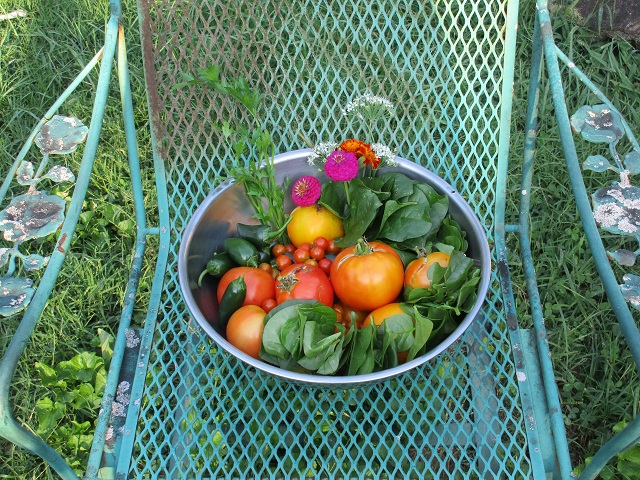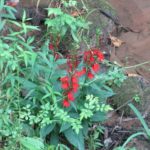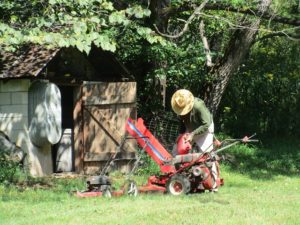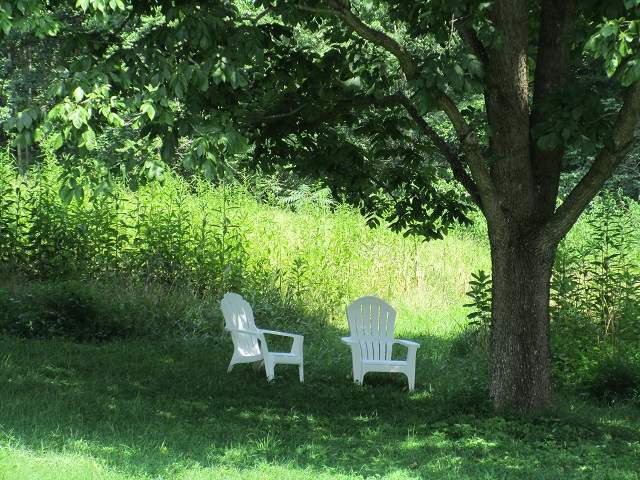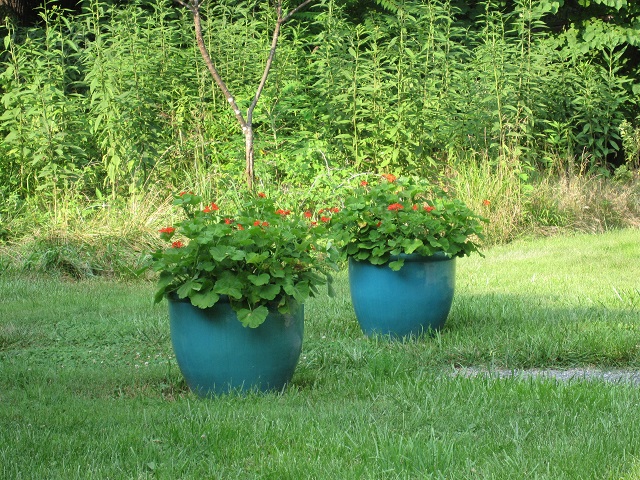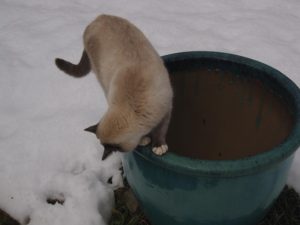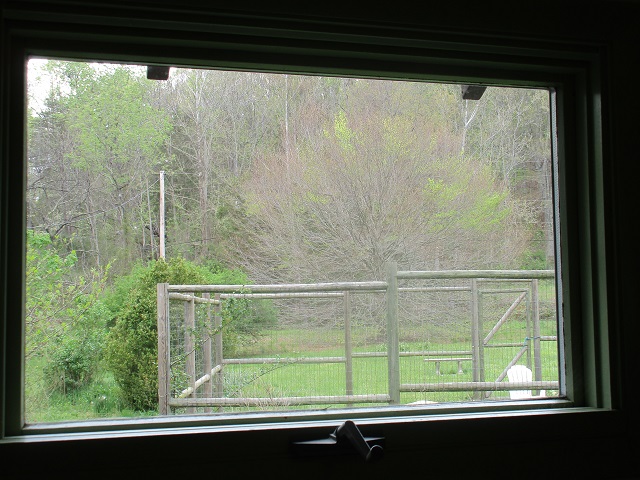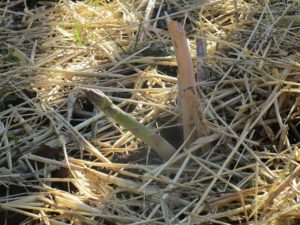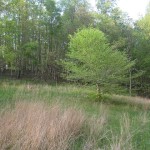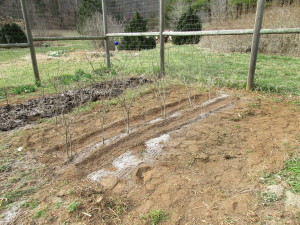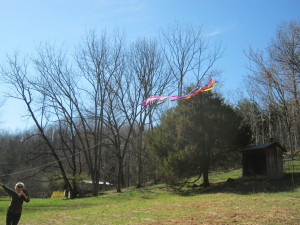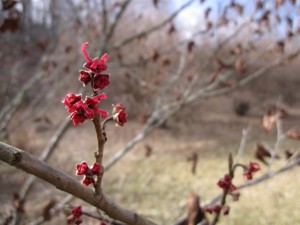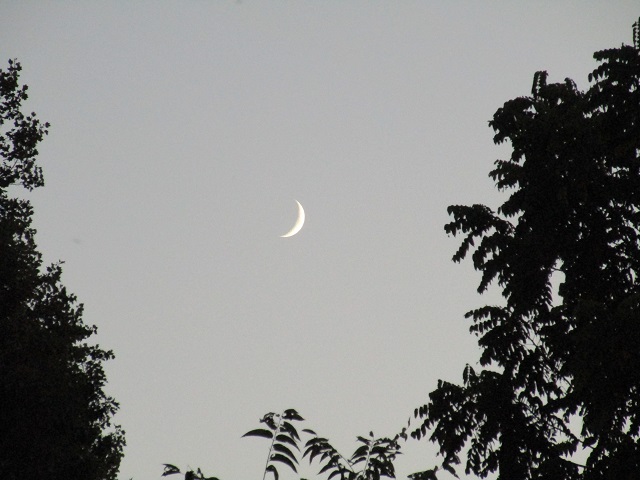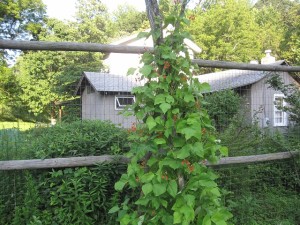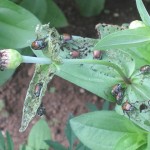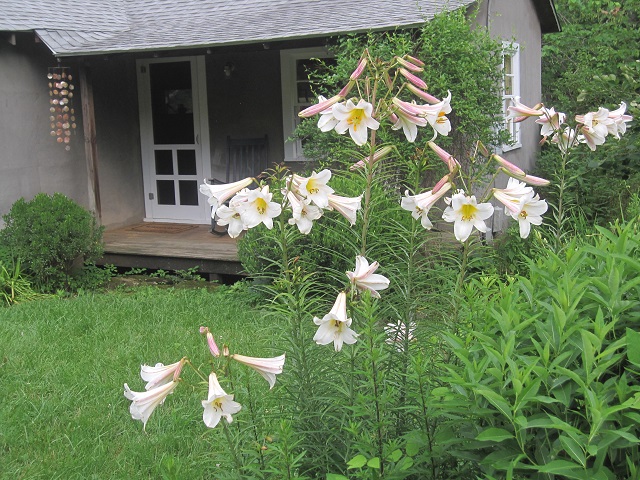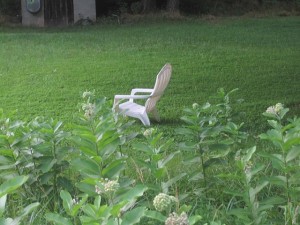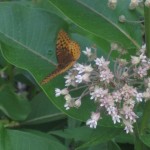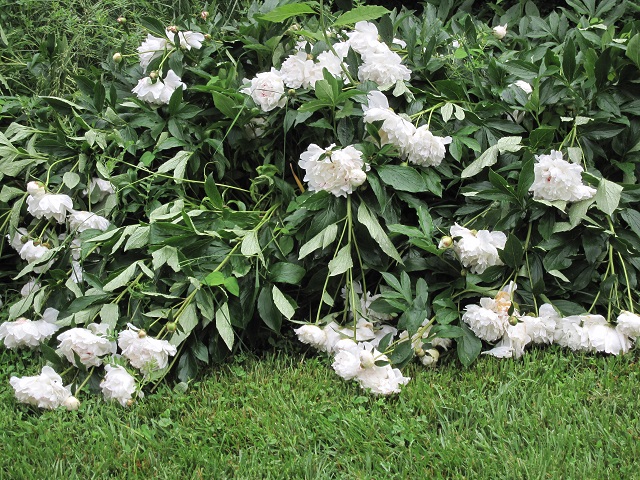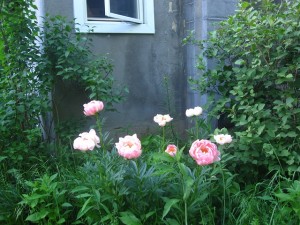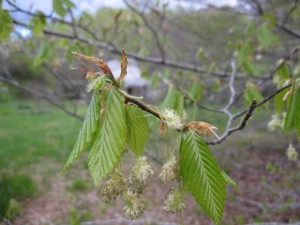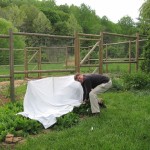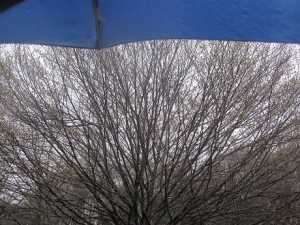Even the bad gardener can reap riches. Malabar spinach, tomatoes, garlic chives, basil, parsley and jalapenos fight their way through the weeds. Self-seeded zinnias, marigold (an old single French type that approaches 3′), globe amaranth (purple and cherry red) and Nasturtium ‘Jewel Mix’ light up the overgrown garden against the airy froth of the asparagus fronds.
The asparagus patch received the most care this year, weeded, composted and mulched with stray twice plus extra water. The younger crowns put in over past several years are establishing. The crowder pea ‘Pinkeye Purple’ is bearing tender green-bean tasting pods, a much better choice for late season than the scarlet runner bean I tried last year which threw off beautiful red flowers atop its teepee but produced no beans whatsoever.
Getting tomatoes in late turned out to mean an extended harvest, and Lemon Boy, Sweet 100 and Big Boy are still producing. They make a sweet juice. Lemon Boy is noted for its low acidity and has a beautiful color. A self-seeded cantalope is overgrowing the tomato cages and making good fruit. It’ s been around for a few years now, probably from one thrown in the compost pile. Longer hotter summers are good for melons.
Fall ripens all around us. Yellow wingstem and mauve Joe Pye swirl in the meadows, with an occasional dash of cardinal flower, walnut leaves drift down like a shower of golden coins and the cicadas make their noise at night.
My garden boy needs some help and we are looking into buying a riding mower. The Gravely walk-behind and the “Mosquito” push mower just aren’t cutting it anymore!

